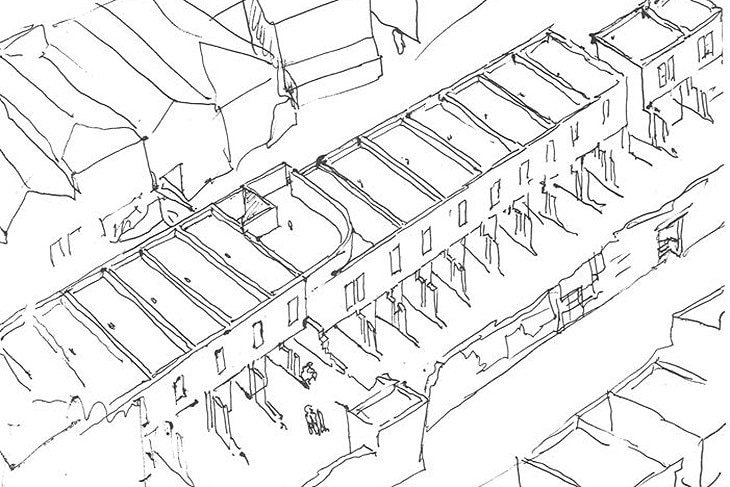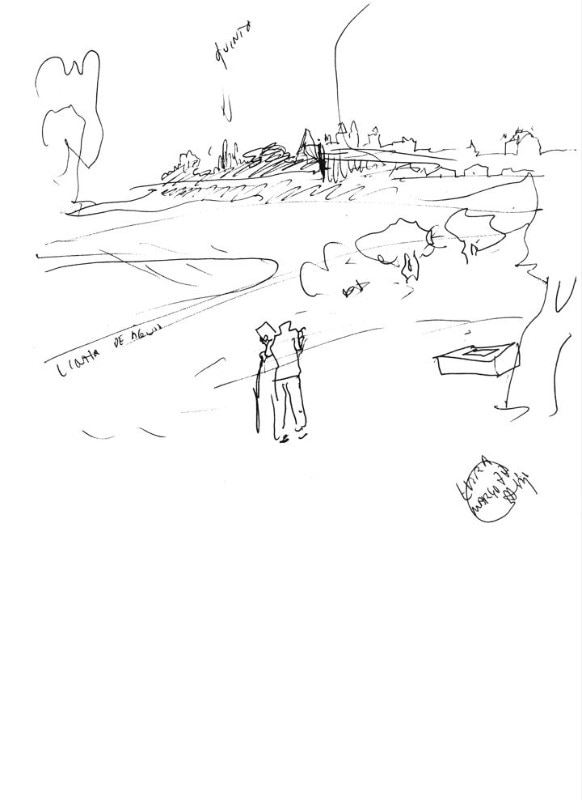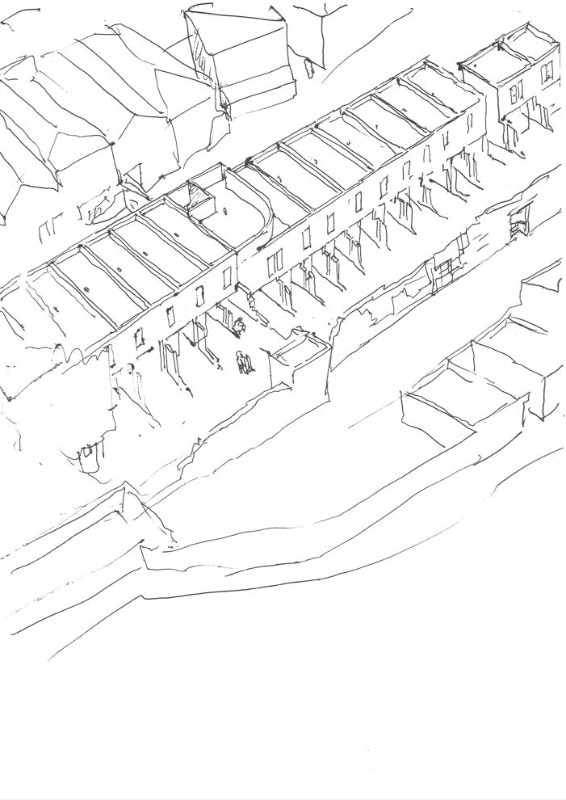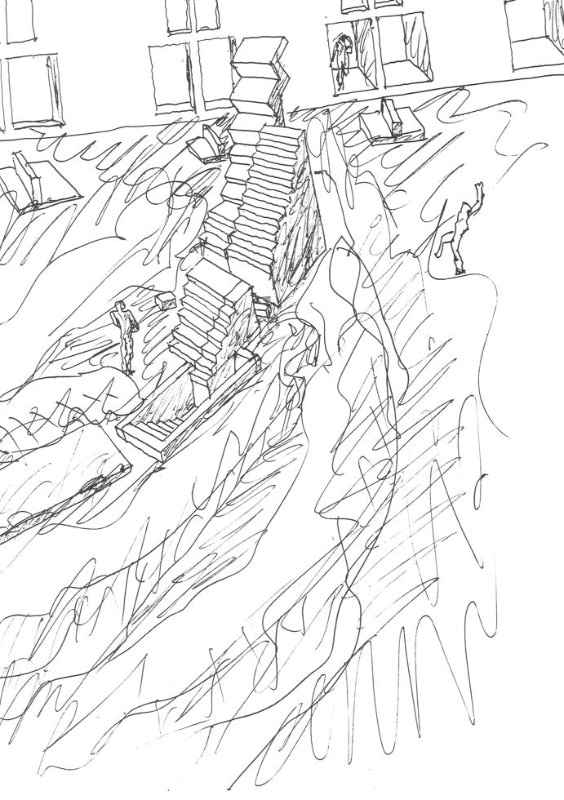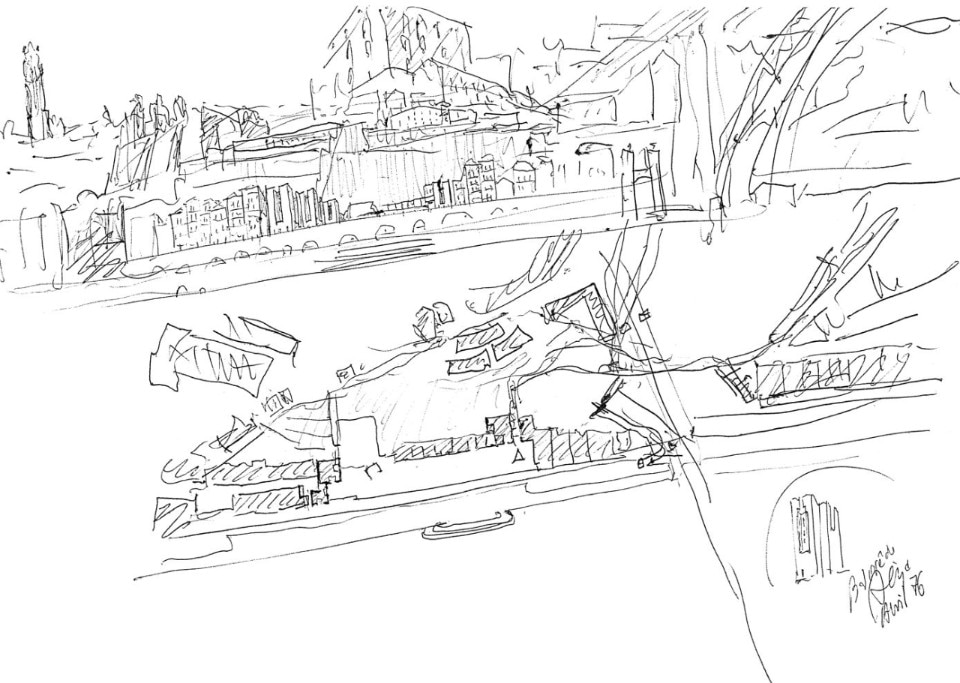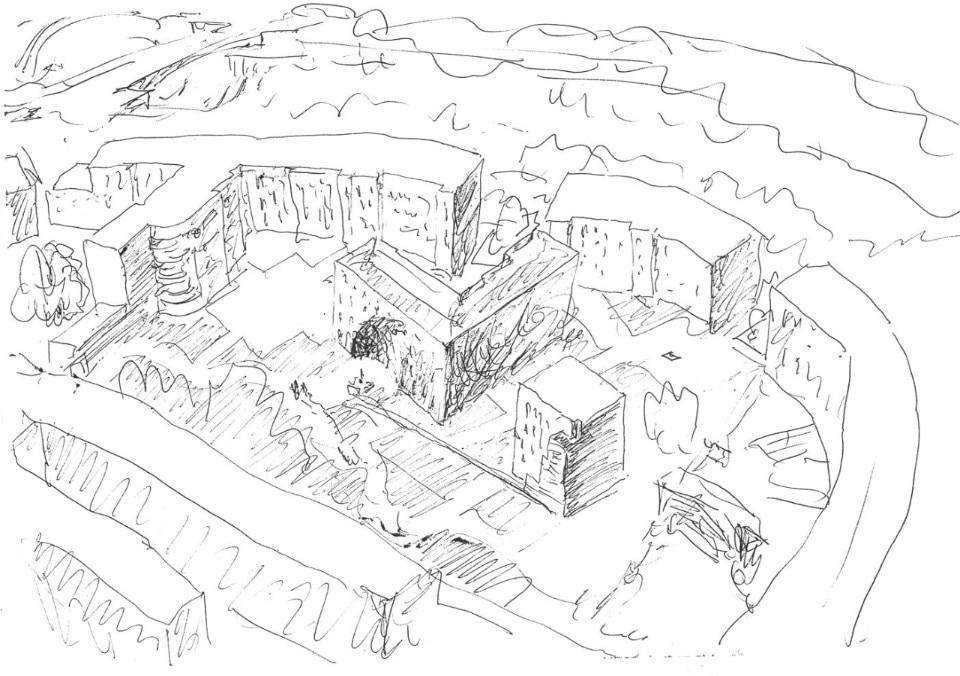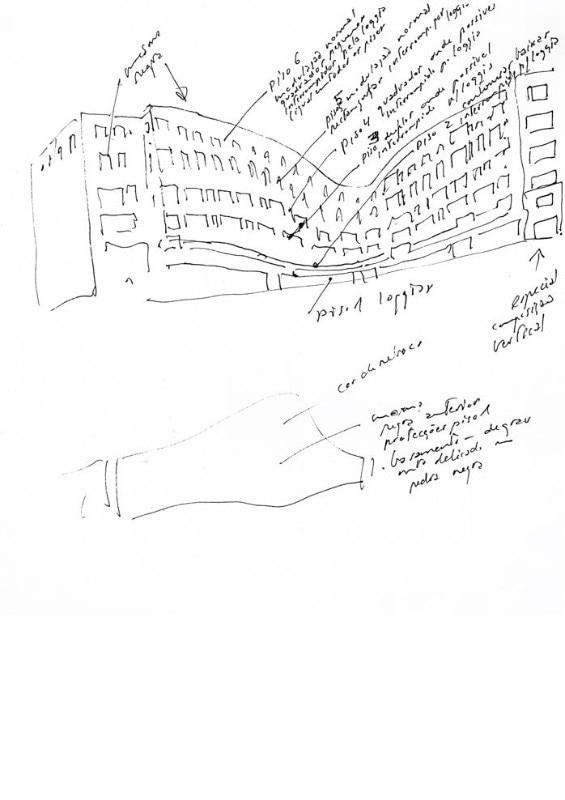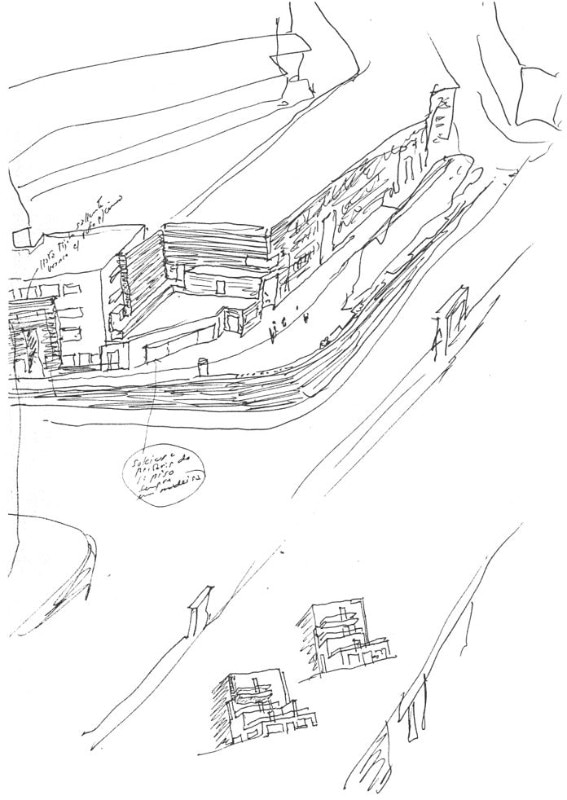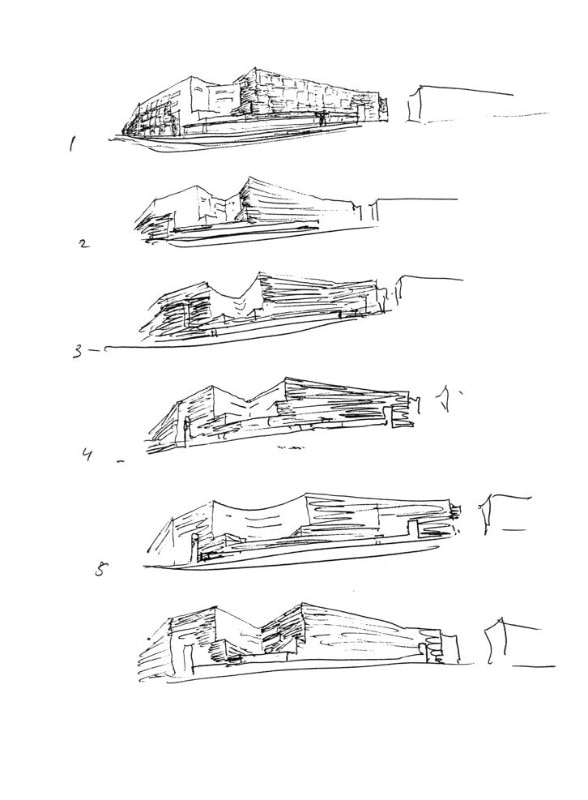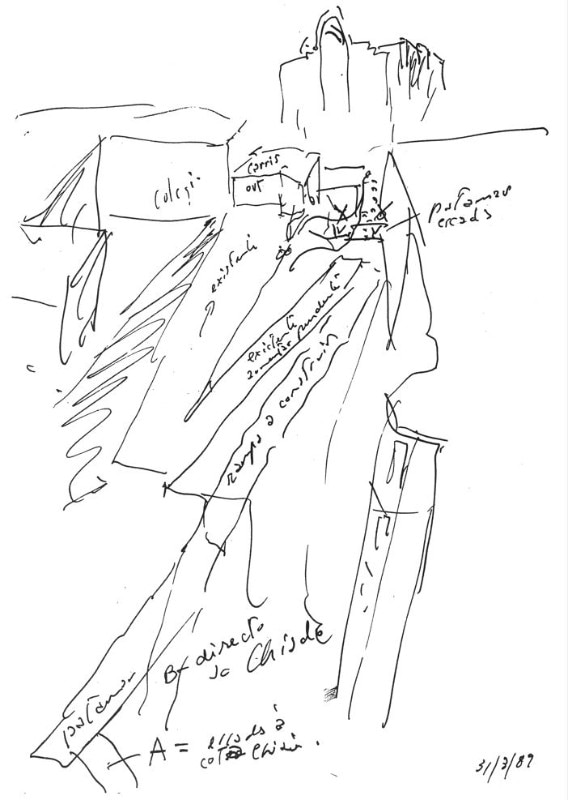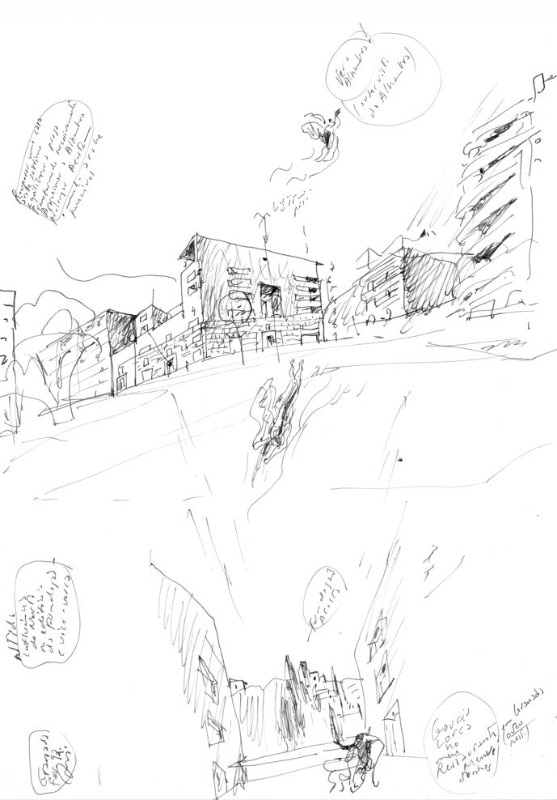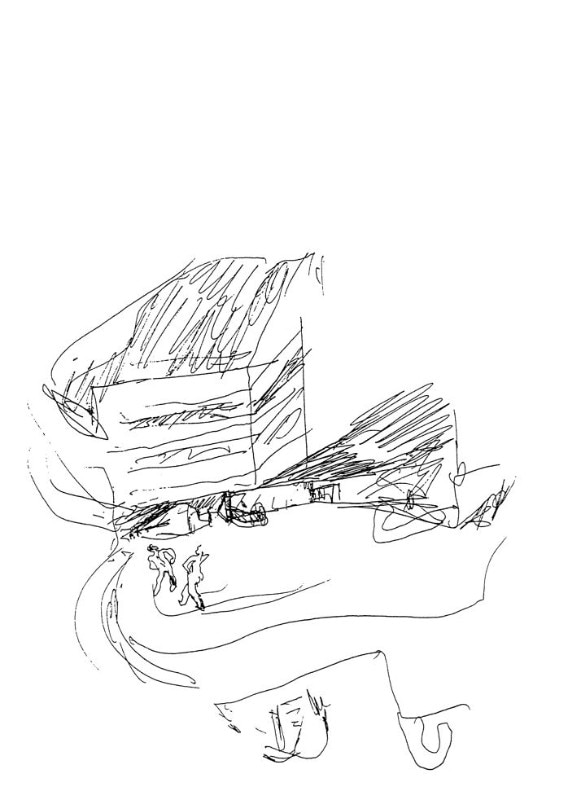This article was originally published on Domus 1071, September 2022.
Looking over the drawings by Álvaro Siza seleted for this issue of Domus reminds me of our collaboration for the Getty Villa project. In one of Siza’s earliest trips to Los Angeles, he and I explored the rugged terrain of a Malibu canyon overlooking the Pacific and into which J. Paul Getty shoehorned an ersatz Roman villa inspired by the Villa of the Papyri at Herculaneum.
Our journey was an uncharted, mapless experience of continuous movement (walking, surveying, sketching). The “project” was not so much designed as revealed in over 100 annotated sketches and drawings ultimately submitted as the competition entry sketchbook.
Taken as a whole, The Getty Sketchbook offers a metaphorical allegory that illustrates principles of his architecture and working method. Through Siza’s gaze, the unbounded territory in all its unforeseeable heterogeneity was collapsed into the flat frame of the A4 sketchbook. In the lines and marks on the page everything was in flux – hierarchies and distinctions between up and down, real and imaginary, were subject to being reshuffled, recomposed and redrawn.
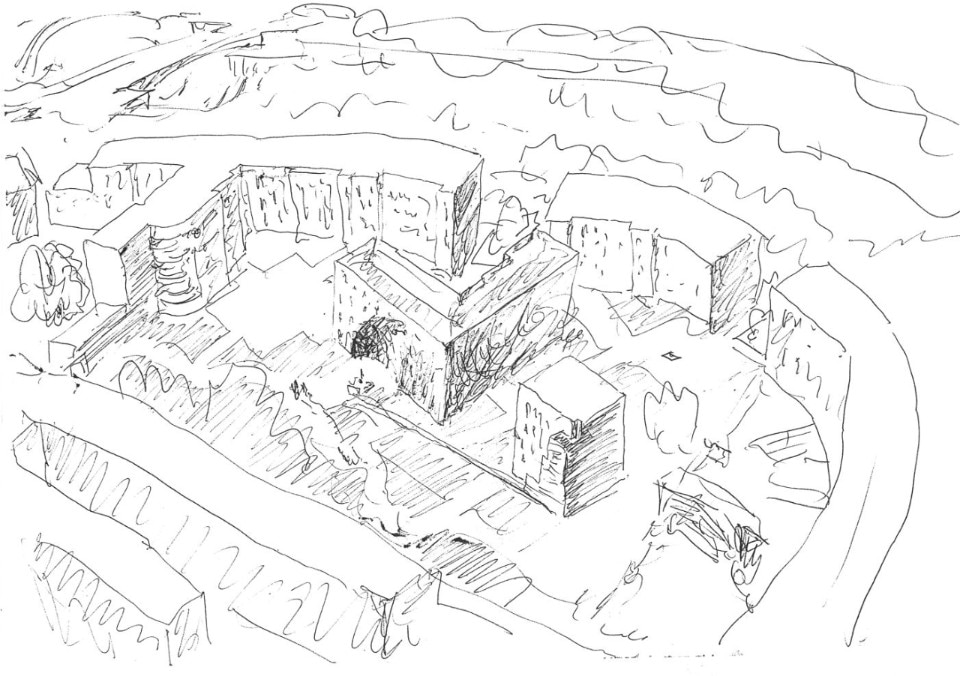
At the Getty, Siza produced “sightless” drawings – a performance embedded in anticipation and memory. Following a familiar pattern, the Malibu drawings were later assembled in the Porto office alongside other instruments and media: topographic maps, programmatic areas, measured drawings, computer printouts, study models and museum collections. For Siza, the apparent rigidity of the Euclidean coordinate system and the “paper project” by which architecture speaks to itself provides a structure to his aesthetic mode that infinitely exceeds categories of subjectivity and objectivity.
In the Getty Villa project, and his body of work as a whole, Siza’s way of seeing rejects the Platonic split between false appearance and true essence. His “virtual camera” is a gnostic machine in which seeing, looking and capturing happens all at once rather than a single point of view. The diachronic series dissolves into parallel capture and superposition. These vibrantly authentic drawings manifest Derrida’s approbation, “Draftsmen, and painters, especially the great ones do not give ‘something’ to see; they give visibility to see, which is something else altogether, which is absolutely irreducible to the visible, which remains invisible.”


